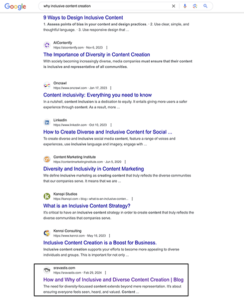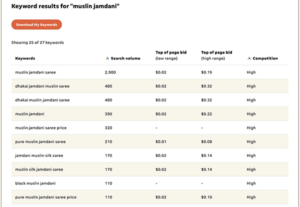Clients often wonder about the importance of SEO and non-SEO content writing and how it helps website rankings. A website’s ranking on search engines relies heavily on its on-page and off-page SEO. On-page SEO reflects your housekeeping talent. It determines which word and phrase your website ranks for. Off-page SEO shows your social credibility and how high your website ranks. The common factor between the two is site content that enhances visibility, attracts users, and achieves long-term success. Search engines value websites that have unique and helpful content.
There are two ways of creating website content. These are SEO and non-SEO content writing.
- SEO content: Content must be optimised for search engines, including meta tags and descriptions, headers, footers, images, and sponsored ads. This improves website visibility by targeting specific keywords and phrases.
- Non-SEO content: This content is usually written to inform, entertain or persuade the audience without focussing on improving search engine rankings. It includes creative writing, journals, e-books, guides, blogs, presentations, infographics, SlideShares, etc.
Why is SEO-friendly content crucial?
- Visibility: Optimising content for relevant keywords increases the likelihood of appearing higher in search engines like Google, Safari, Yahoo, etc. This improves visibility to potential customers.
- Traffic generation: Higher rankings lead to more organic traffic because users are likelier to click on top-ranking results.
- User experience: Well-structured, informative content improves user experience by providing easy access to valuable information. This leads to higher engagement and lower bounce rates.
- Credibility and authority: Consistently producing high-quality, optimised content builds credibility and authority in your industry, building trust with users and search engines.
- Competitive advantage: Effective SEO-based content helps outrank competitors, capturing market share and attracting customers.
- Long-term sustainability: Unlike paid advertisements, SEO content provides sustainable results, driving continuous organic traffic and reducing acquisition costs.
What are the best practices for writing SEO-optimised content?
The content must feature in the first two pages of the search engine. Firstly, it is challenging to feature on the first two pages for a long time. SEO is a continuous process that includes investing money in ads. Secondly, it is the toughest to rank for high-competition high-volume keywords. So, to successfully optimise content, you must follow some of the best practices in web content writing.
- Keyword research: Thoroughly research relevant keywords and phrases using tools like Google Keyword Planner, SEMrush, or Ahrefs to discover high-volume, low-competition keywords.
- Keyword placement: Strategically place them in crucial areas of your content, including the title, headings, subheadings, meta description, and throughout the body text. However, avoid keyword stuffing. The text should flow naturally without compromising its readability.
- Quality and relevance: Create content to add value. Ideally, pages should have a minimum of 500 words of unique content. Focus on creating high-quality, relevant content that addresses user needs, answers questions, and offers solutions. Keep the main keyword close to the top of the page. Use LSI (Latent Semantic Indexing) keywords and phrases throughout the body text and conclusion. But use these only if they fit in naturally.
- Engaging headlines: Since the font size of the headings is the largest on the page, the search engine gives them more importance. Ensure that your keyword is weaved into the headline. Craft attention-grabbing and descriptive headlines that reflect your content and entice your readers to click through from the search engine results page (SERP).
- Optimised meta descriptions: Write concise and compelling meta descriptions that summarise the content of your page. Meta descriptions do not directly impact rankings. However, they can influence click-through rates (CTR) from the SERP, which might affect your SEO performance.
- Use of headers and formatting: Organise your content using headers (H1, H2, H3, etc.) to improve readability and structure. Headers break up your content into digestible sections and tell the search engines about the importance of different parts of your content.
- Optimised images: Optimise your images using descriptive file names and alt text that include relevant keywords. This helps search engines understand the context of your images and improve visibility in image search results.
- Internal and external linking: Incorporate internal links to other relevant pages on your website to improve navigation and distribute link equity. Also, include external links to authoritative sources to provide further value and credibility to your content.
Example of the effectiveness of good SEO writing
I will add an example of good SEO content writing here. Apart from addressing user requirements, my article on the How and Why of Inclusive Content Creation ranks because of proper SEO practices. This article shows up in the first two pages if searched with any of the following combinations:
- Why inclusive content creation or why diverse content creation
- Why inclusive content or why diverse content
- Inclusive and diverse content
- Inclusive content
- Diverse content
It is crucial to choose low-competition and low-volume keywords for long-term success.

Importance of inclusive and diverse content creation ranking
Image 1: Page search for Inclusive Content Creation
SEO content indeed helps in the ranking of websites. However, ranking is not possible based on such content only. Google lists 200 factors that are responsible for consistent ranking. One of the critical factors of both on-page and off-page SEO is non-SEO content. Usually, this is crafted to educate, engage, or influence the audience without specifically aiming to enhance rankings.
How is non-SEO content different from SEO content?
- Keyword usage: You do not need to prioritise keyword optimisation as much as you do for SEO content writing. Instead, focus on creating engaging content that resonates with the target audience.
- Creative freedom: Non-SEO writing allows more creative freedom. Explore different writing styles, tones, and formats without being restricted by keyword density or specific optimisation requirements.
- Audience-centric: Write for the target audience rather than the search engine. Ensure that the content meets the needs and preferences of the readers.
- Less emphasis on structure: Be more flexible in storytelling and expression. Although the content must be well-organised and coherent, it does not need to follow the rigid structural format of SEO content.
- Limited analytics focus: The primary goal of non-SEO content is engaging the audience on a more personal or emotional level. It might not be as closely monitored or optimised for analytics data.
Example of good non-SEO content
Some perfect examples of non-SEO content that have stood the test of time are my articles on muslin jamdani weavers, Nepali truck art and Sravasti pilgrimage. These articles, including the images, feature within the first five searches on Google despite not focussing on keyword placement or strict readability formats. They rank because of the valuable information they share. The header ‘Muslin Jamdani Weaver’s Yarn’ has all the keywords users search for. The word ‘yarn’ has been used as a pun on the words ‘thread’ and ‘story’. It is an LSI keyword, also. The words ‘muslin jamdani’ are highly competitive keywords. So, it is hard to rank with these. However, if we search for low-competitive phrases like ‘muslin jamdani West Bengal’ or ‘muslin jamdani weaver’. In that case, it is easier for the article to feature on the first page of Google.

Muslin Jamdani Weaver’s Yarn ranking
Image 2: Page search for Muslin Jamdani Weaver

Keyword search for Muslin Jamdani
Image 3: Keyword search tool

Nepali Truck Art ranking
Image 4: Page search for Nepali Truck Art

Sravasti Pilgrimage ranking
Image 5: Page search for Sravasti Pilgrimage
While SEO and non-SEO content aim to deliver valuable content to the audience, SEO content is crafted specially to perform well in search results. Non-SEO content gives you creative freedom and helps the audience identify with your offerings. However, a holistic strategy will be to strike a healthy balance by using both types of content on your website. It will help optimise your online brand presence, attract a diverse audience, and foster meaningful connections.
So, to boost your website’s rankings or engagement, write compelling content for your users and the search engines. If you need help, contact us for good SEO and non-SEO content writing.
Collage on Photo Collage: Sravasti & Jess Bailey

